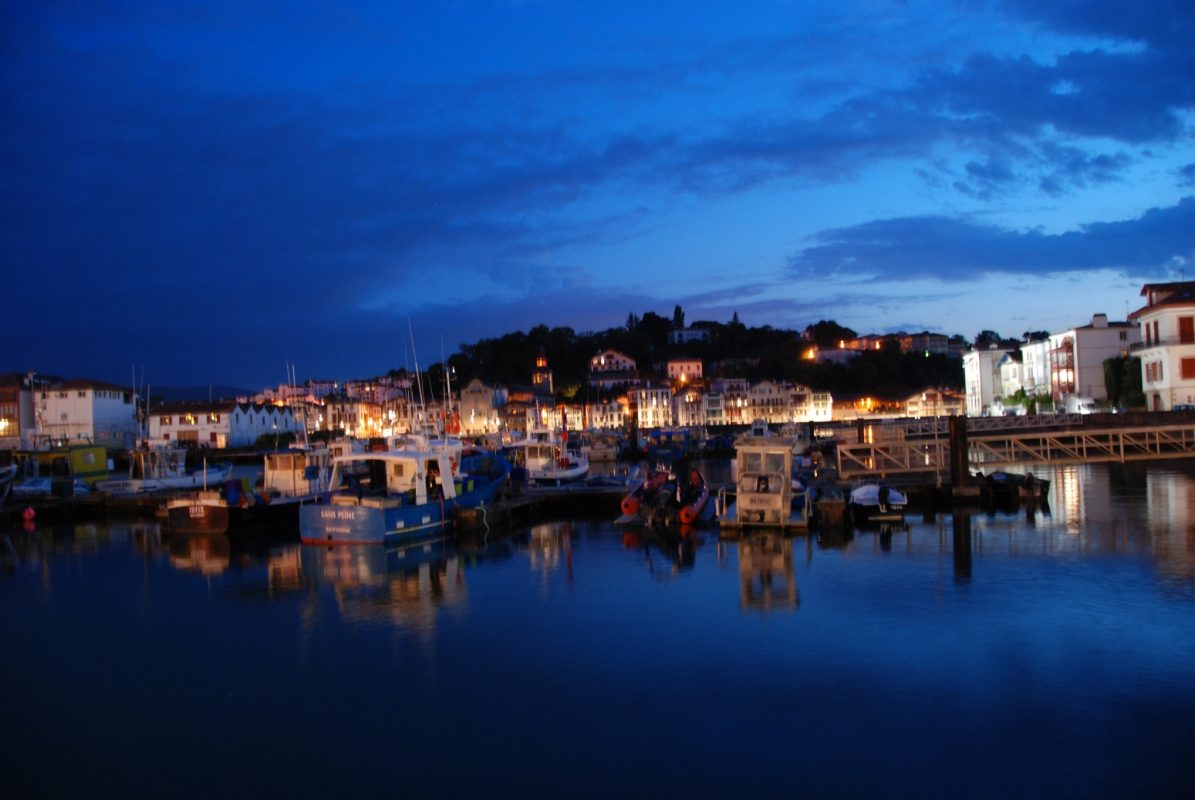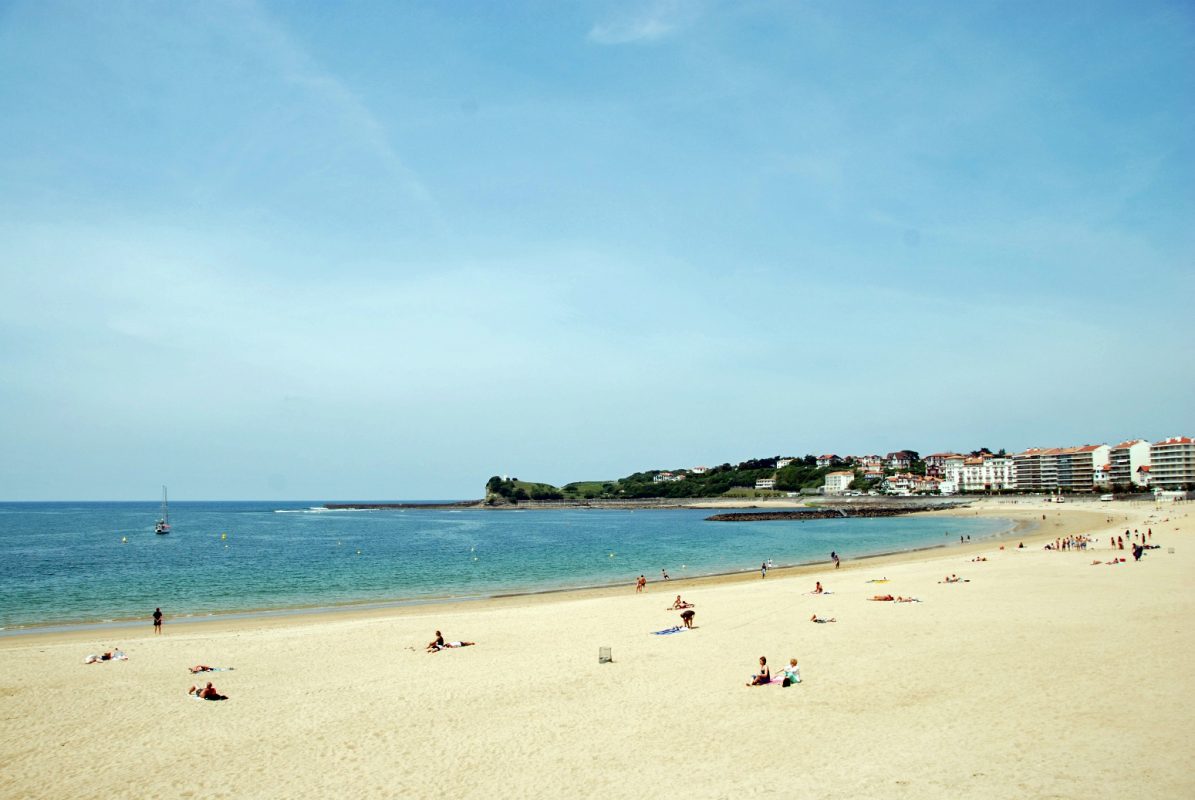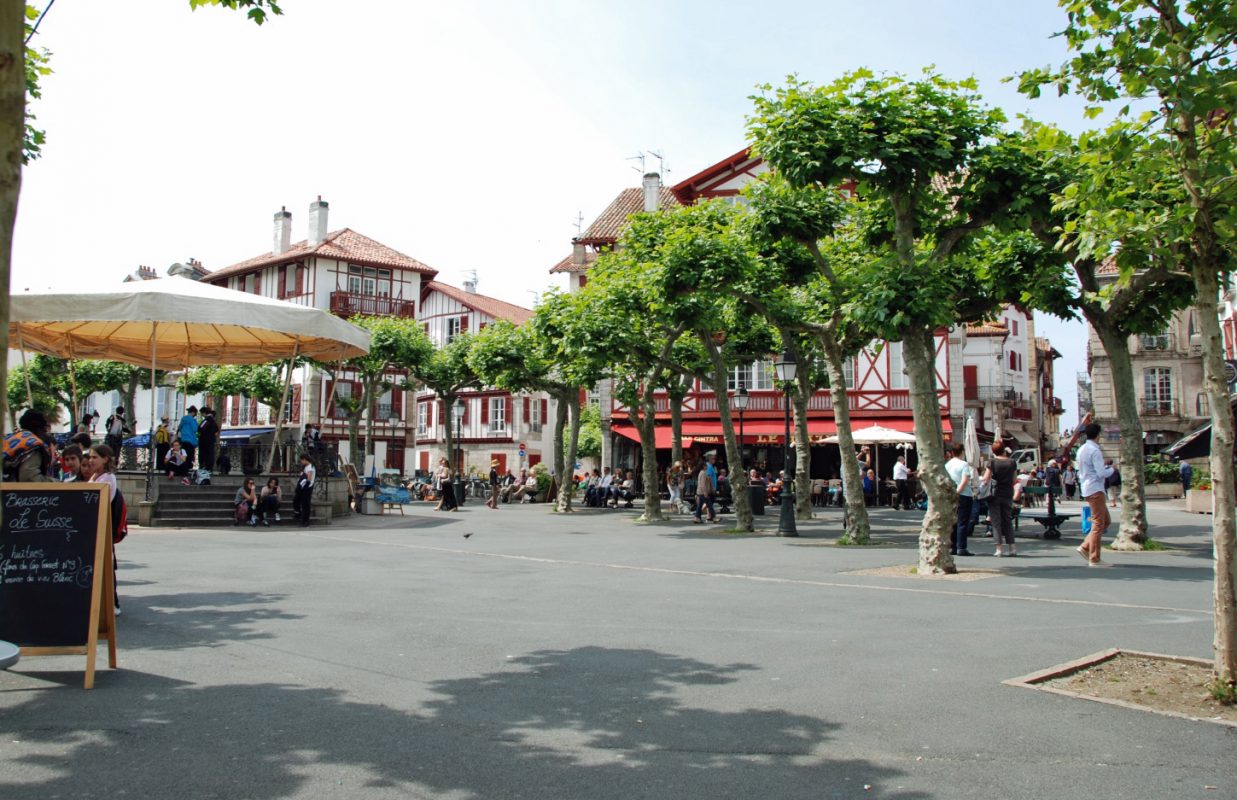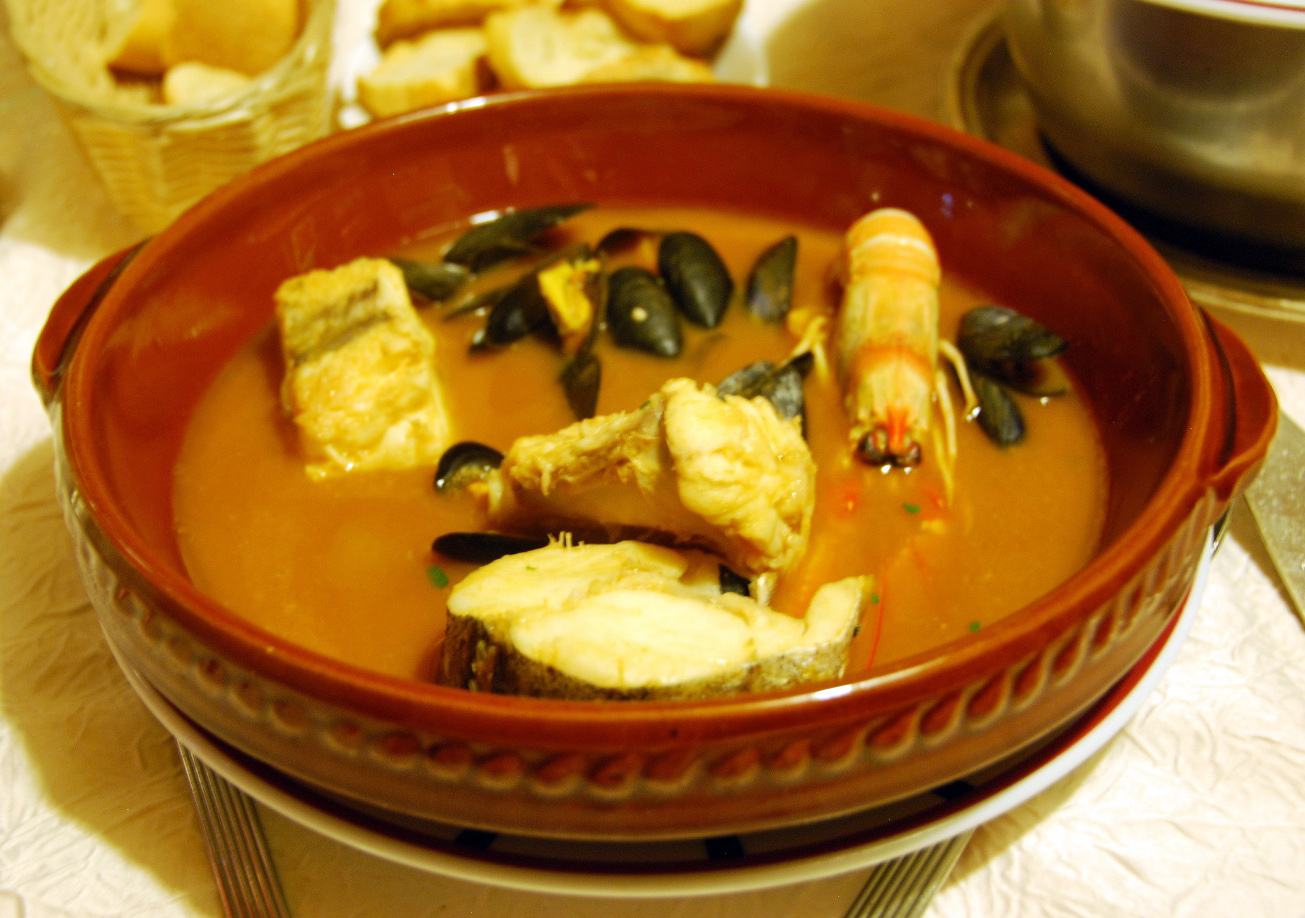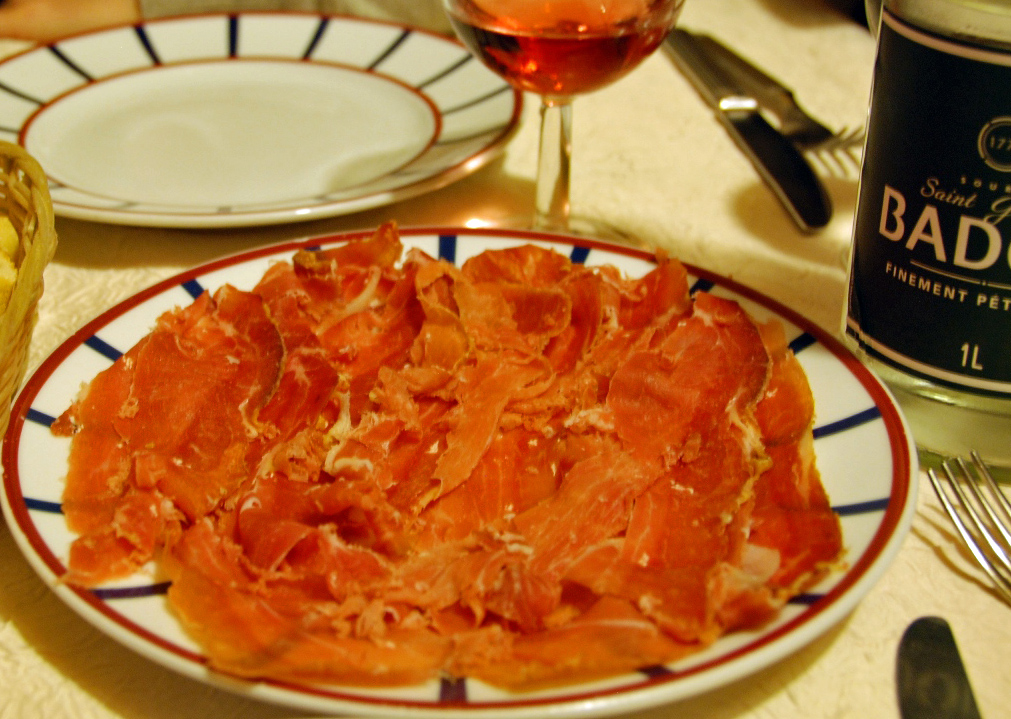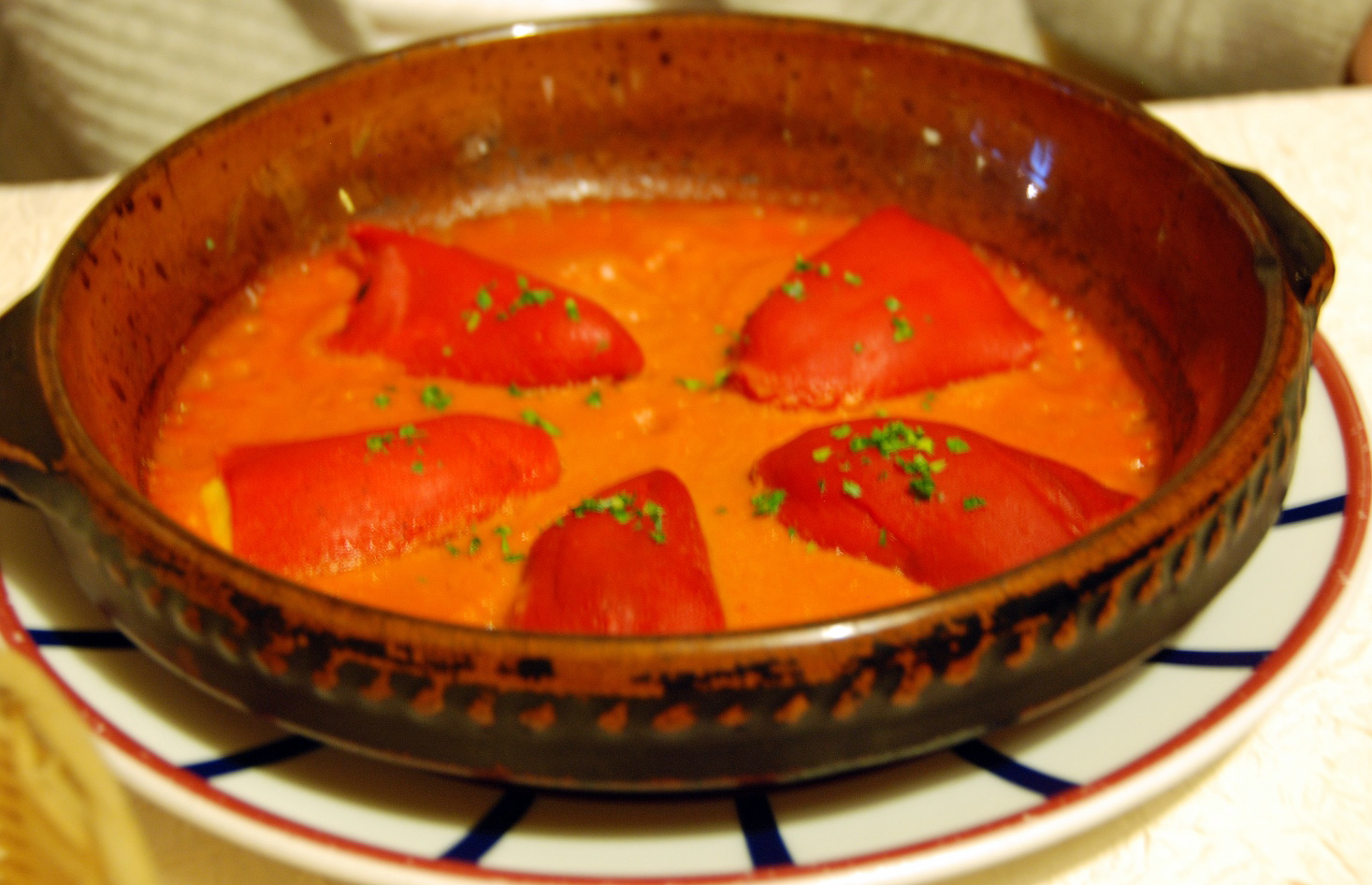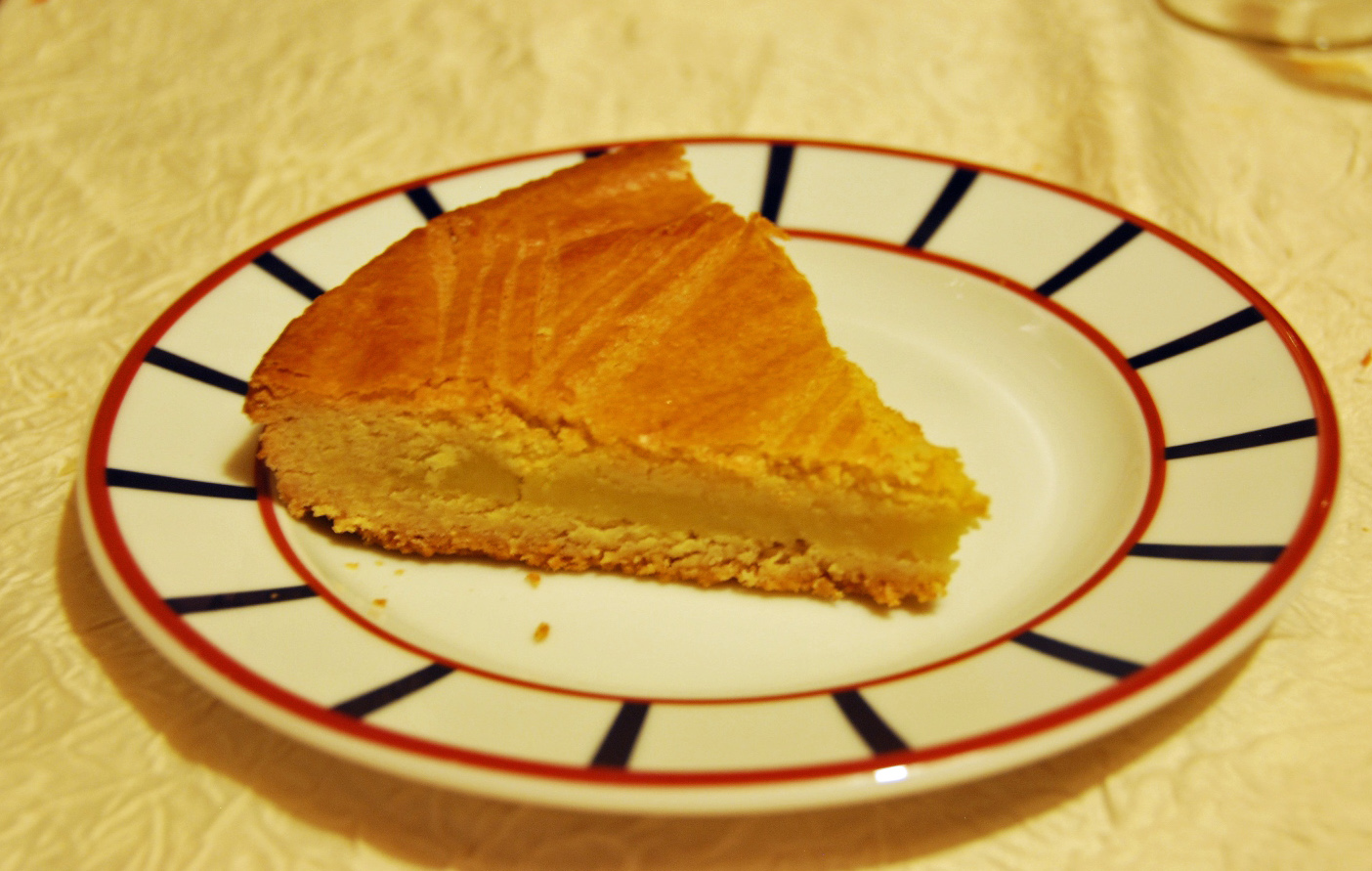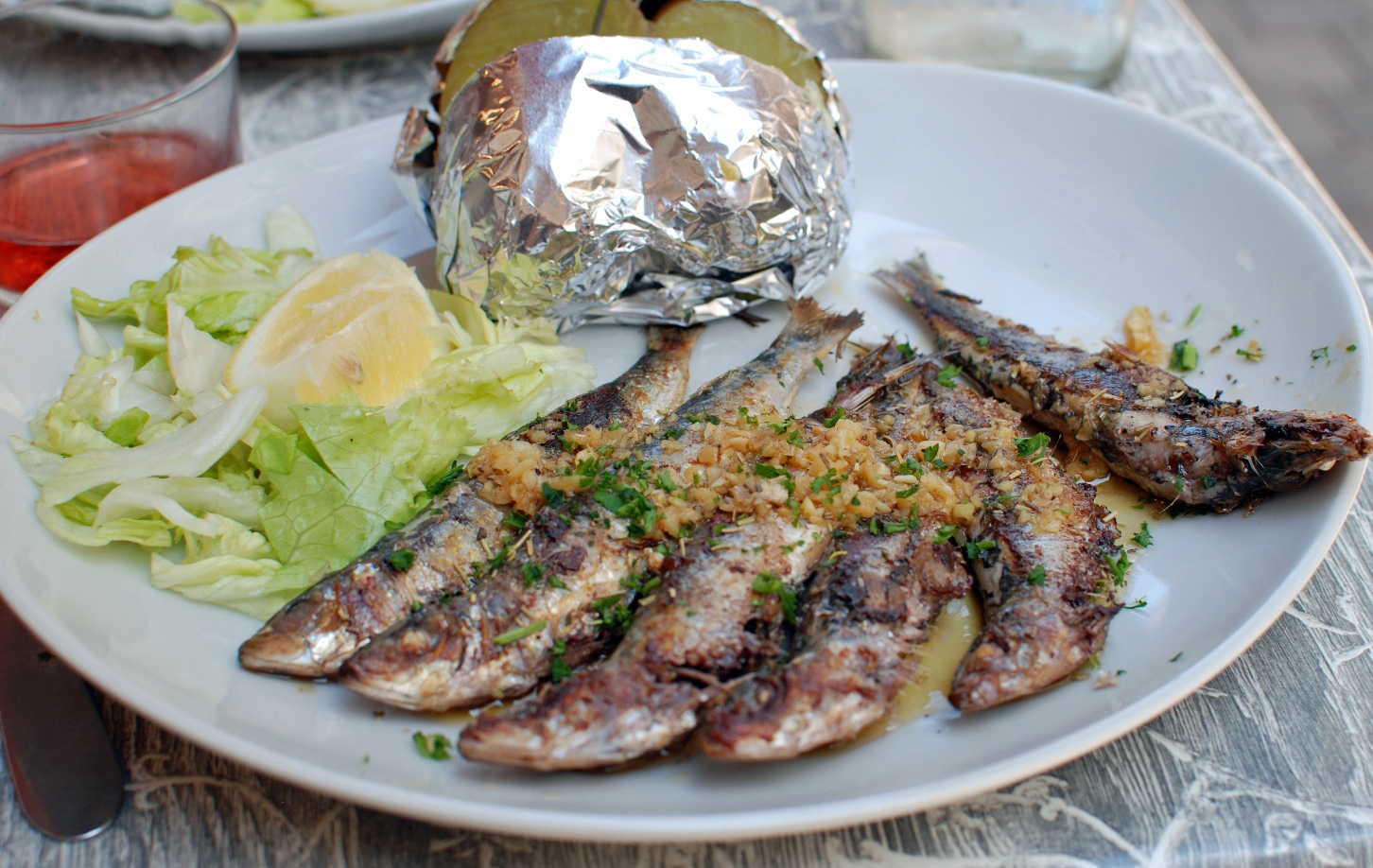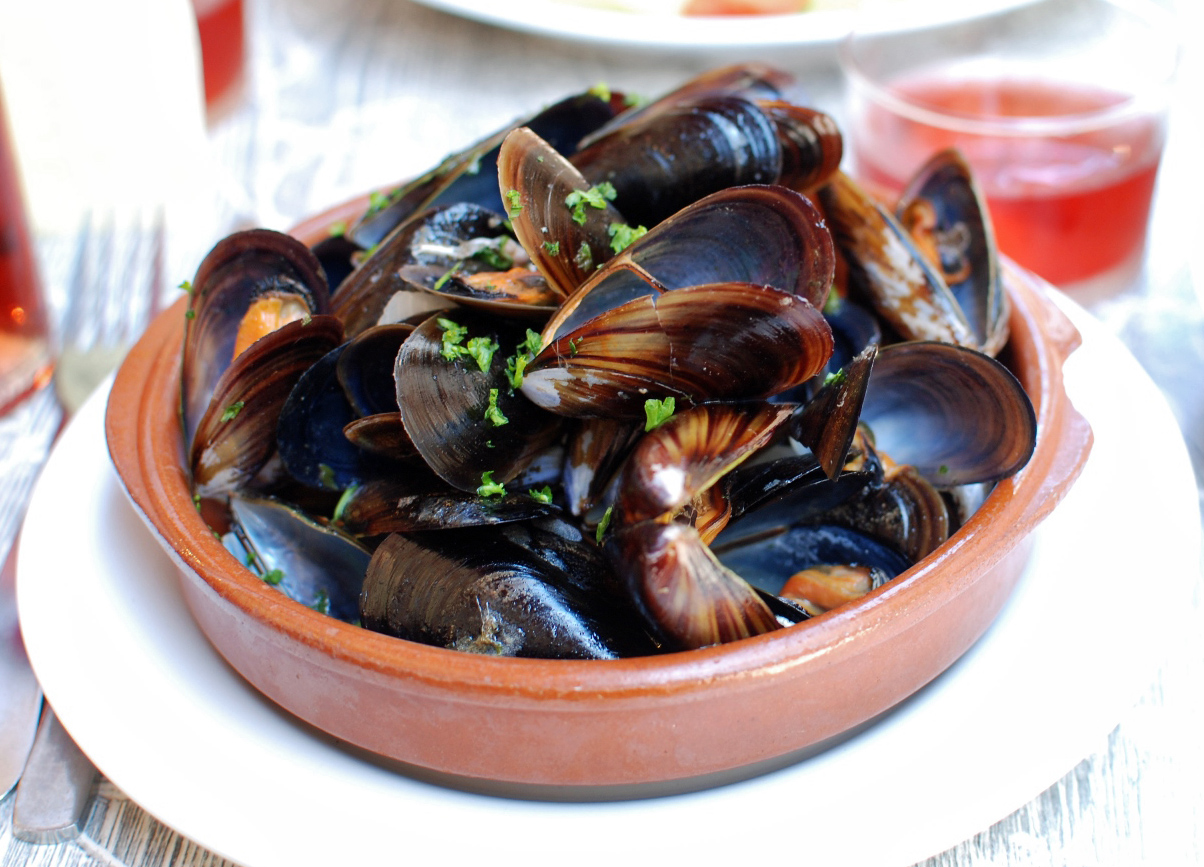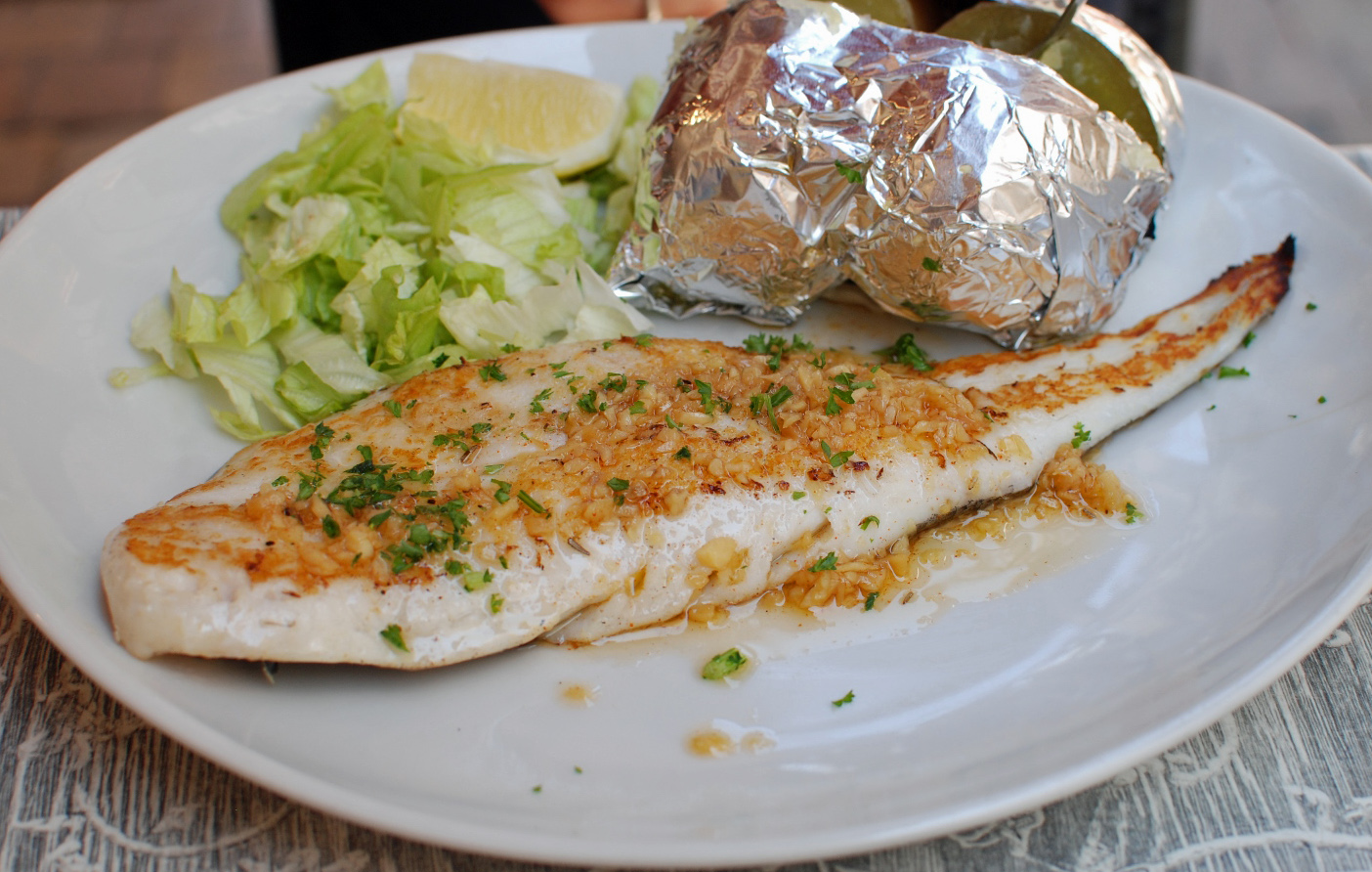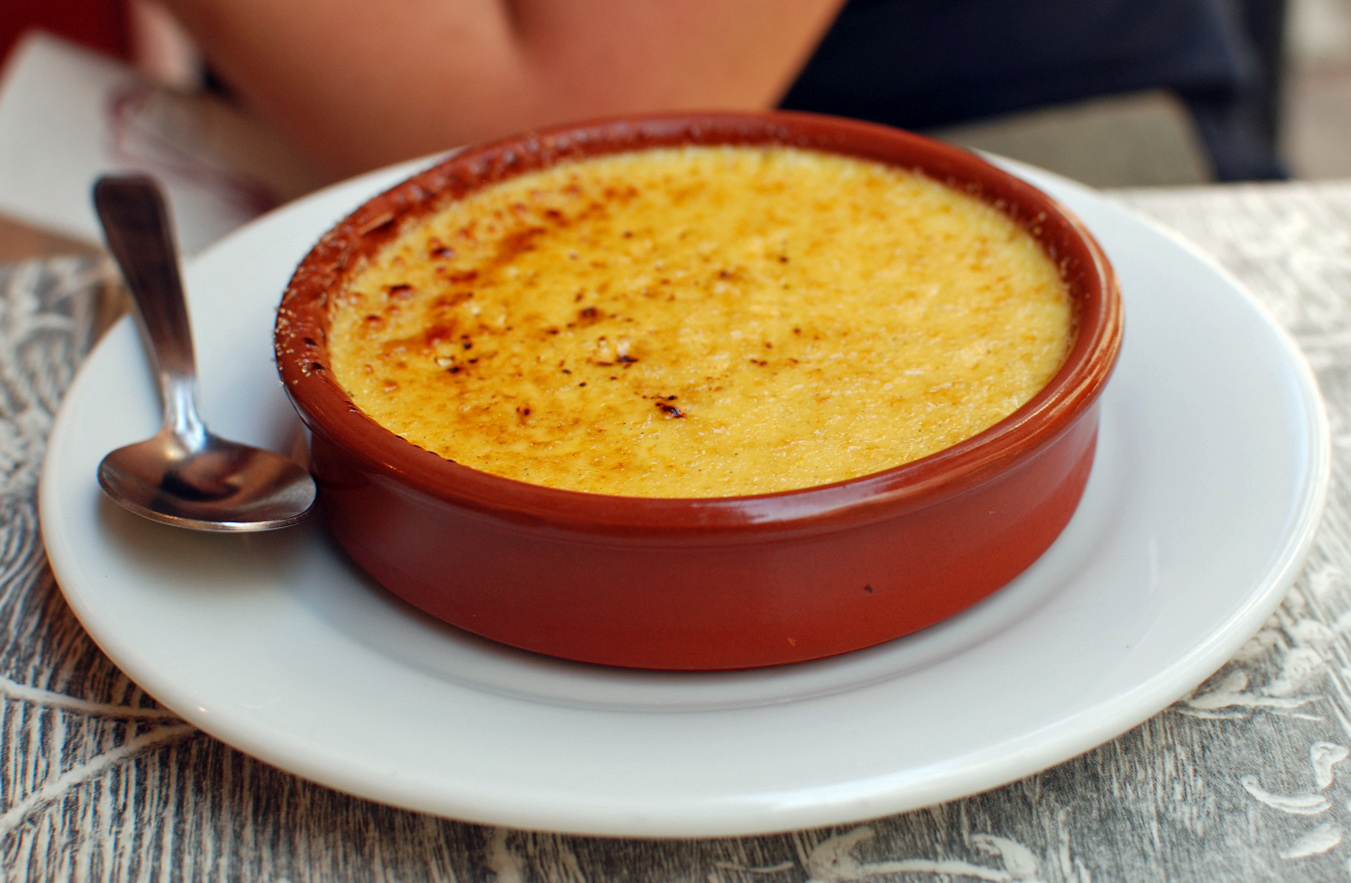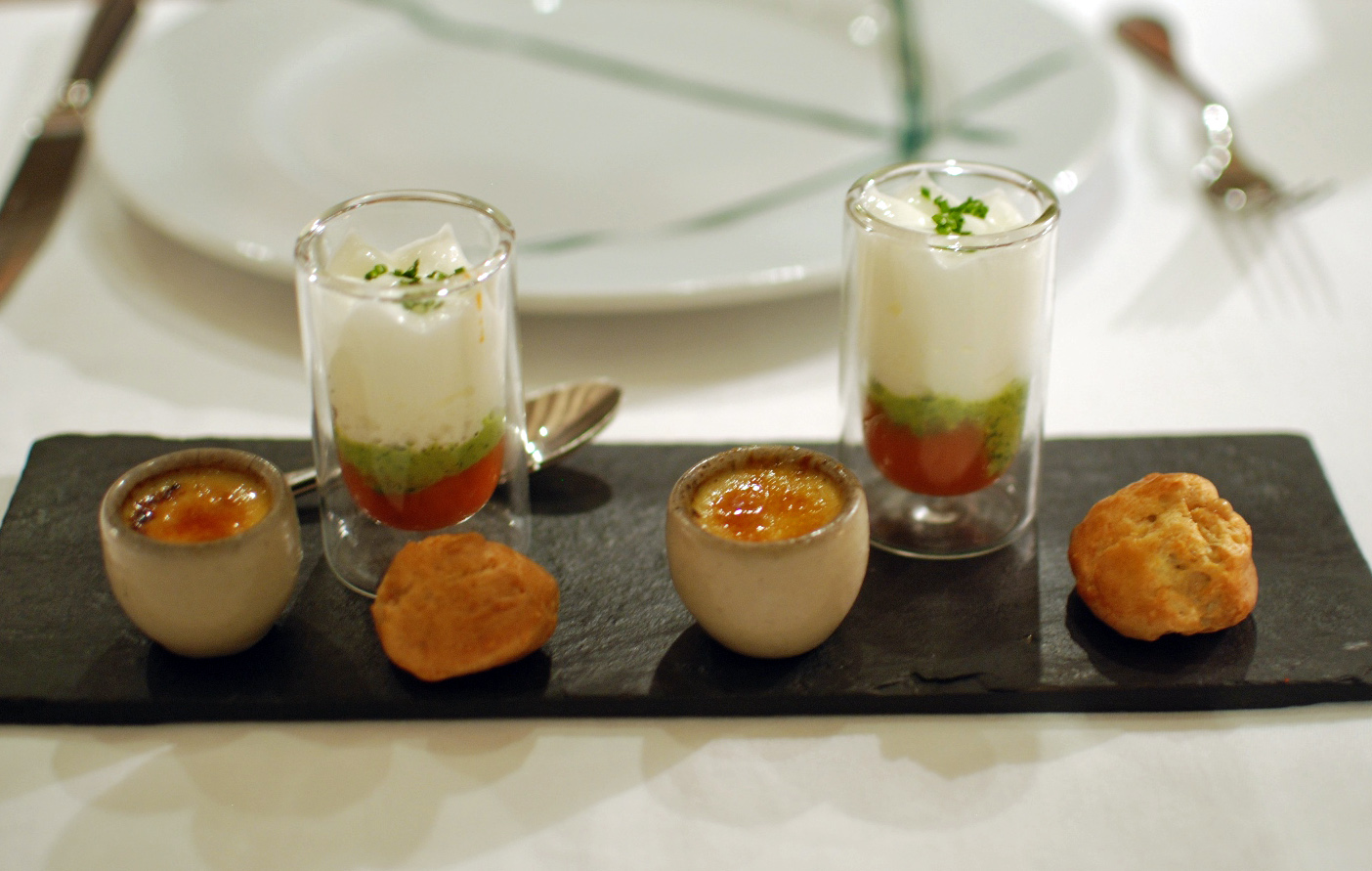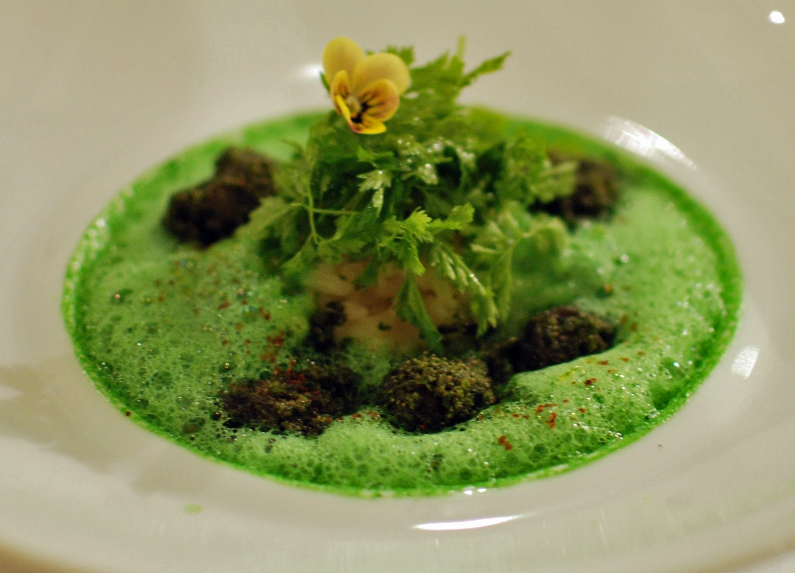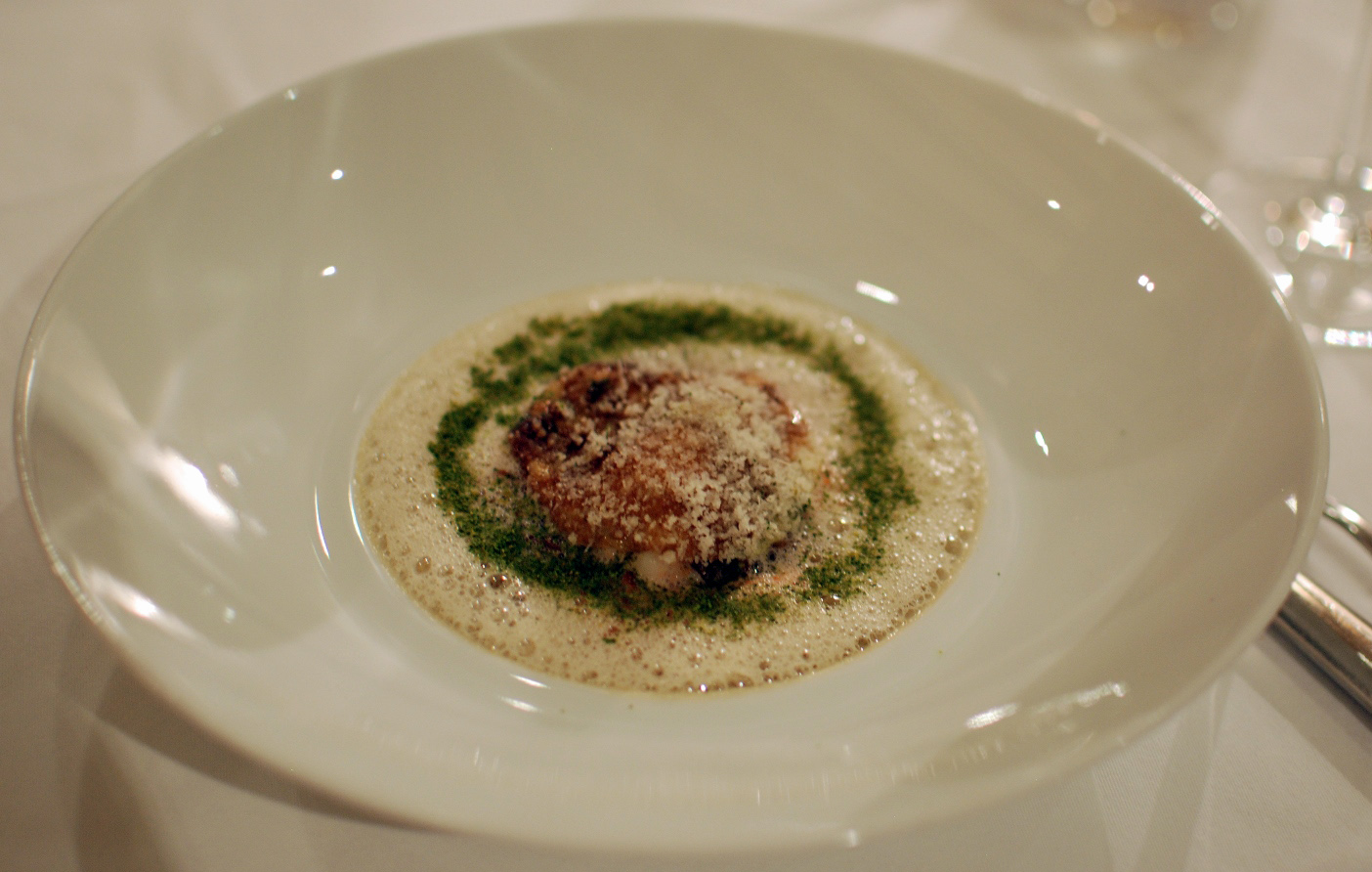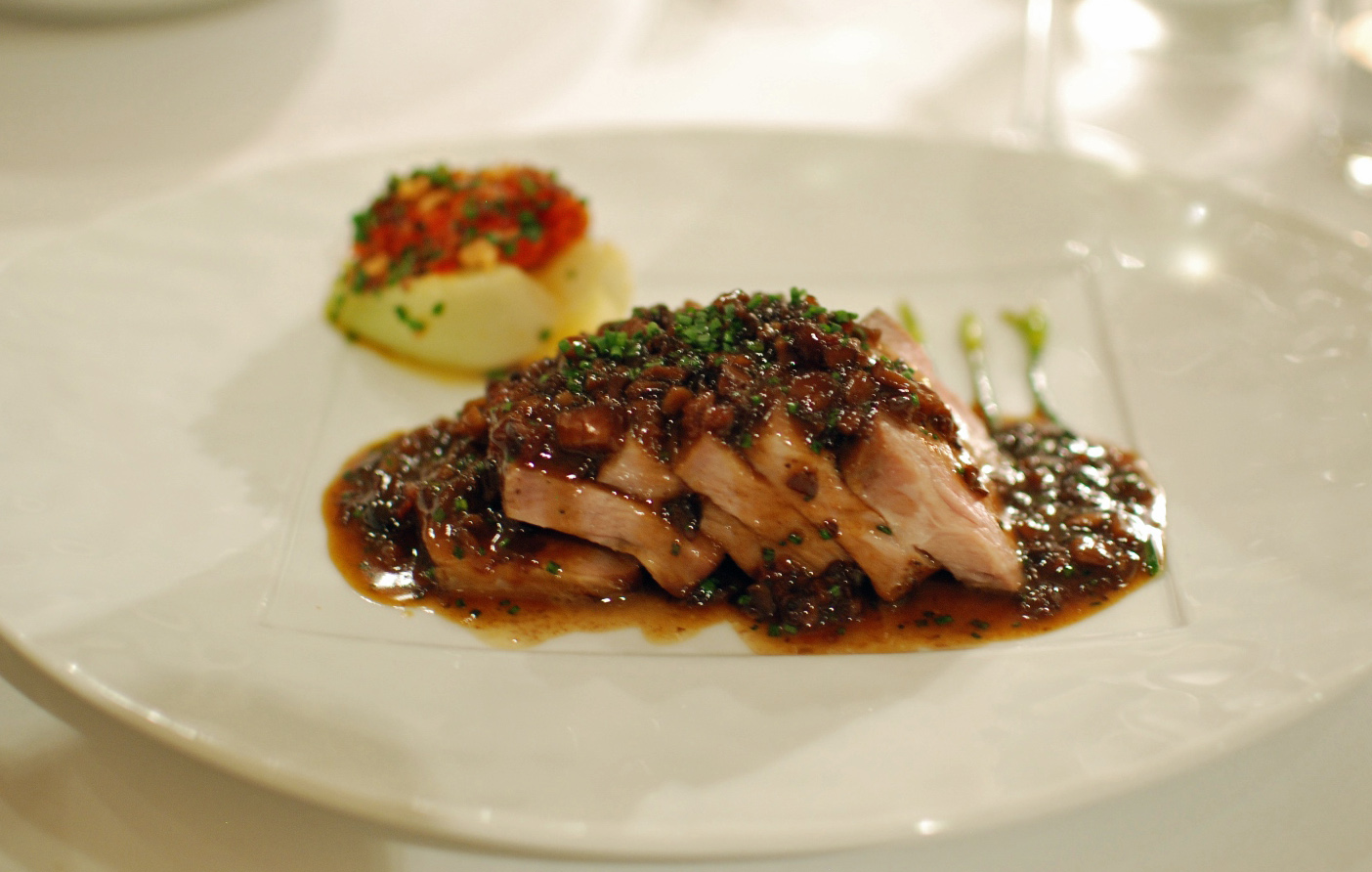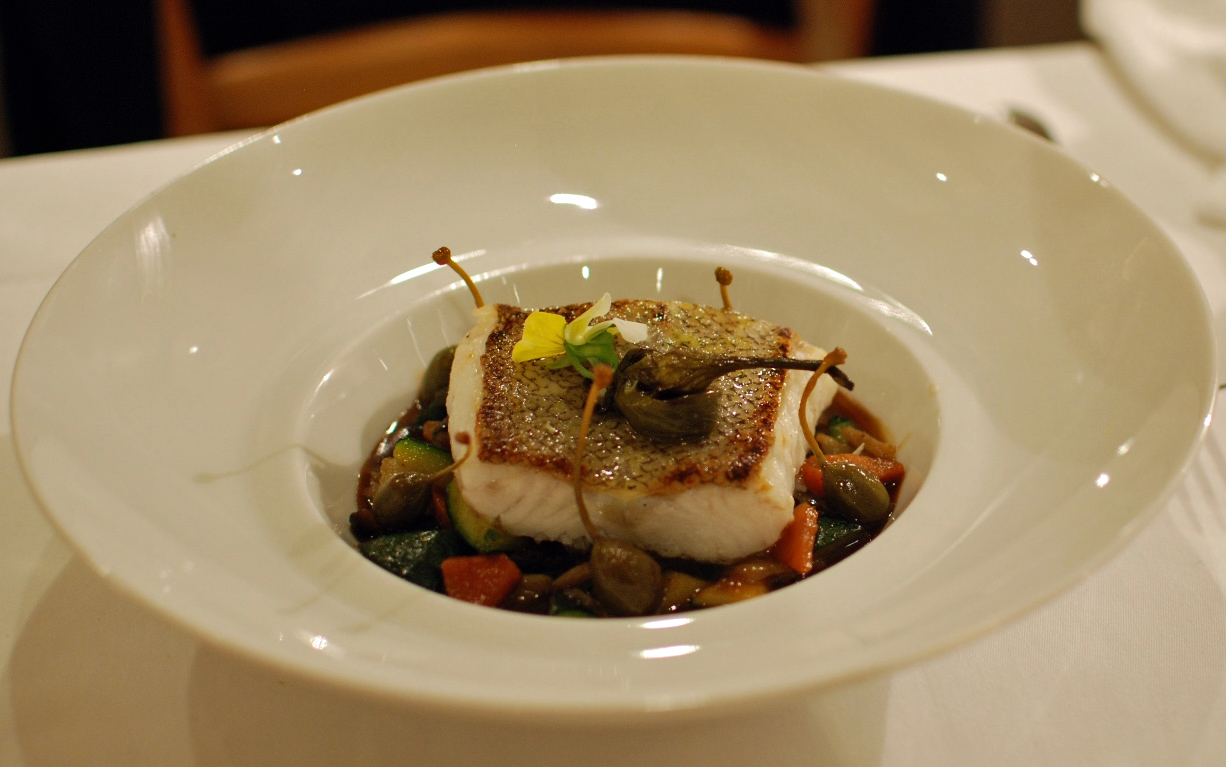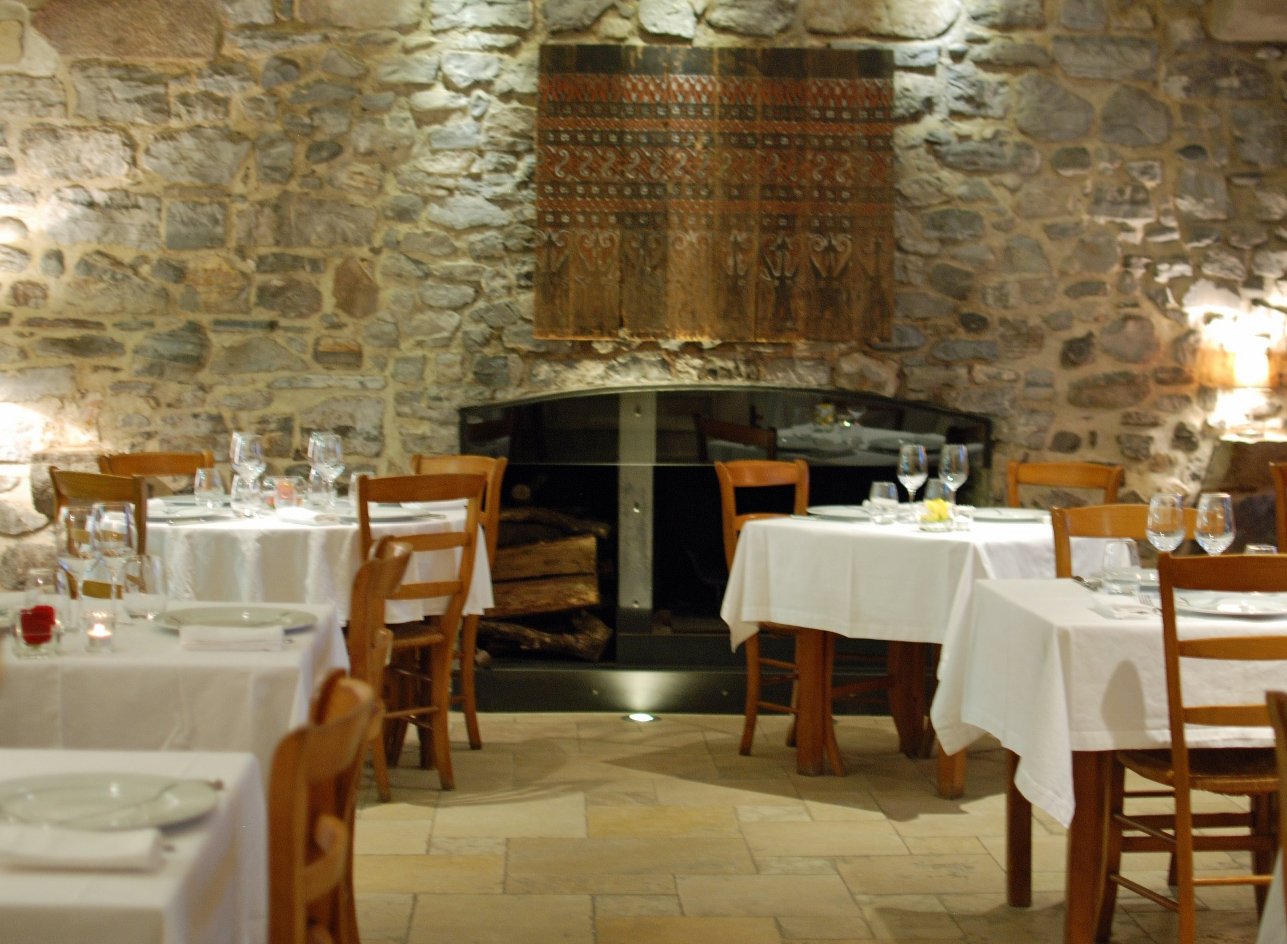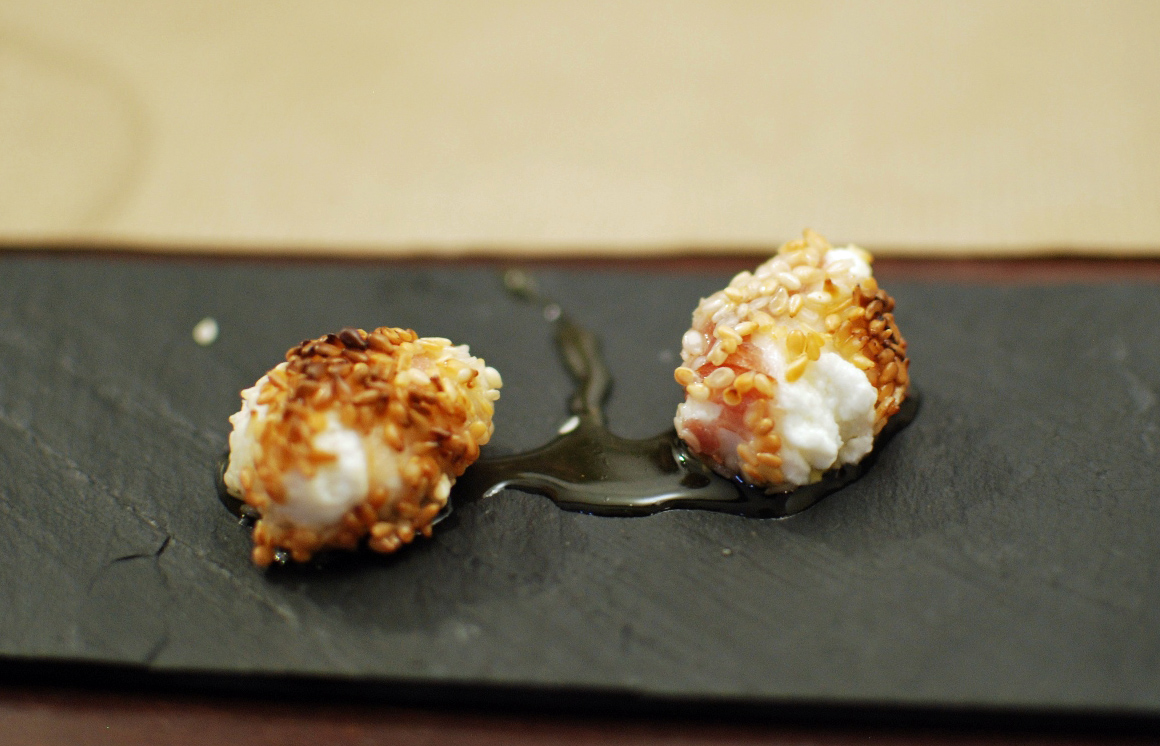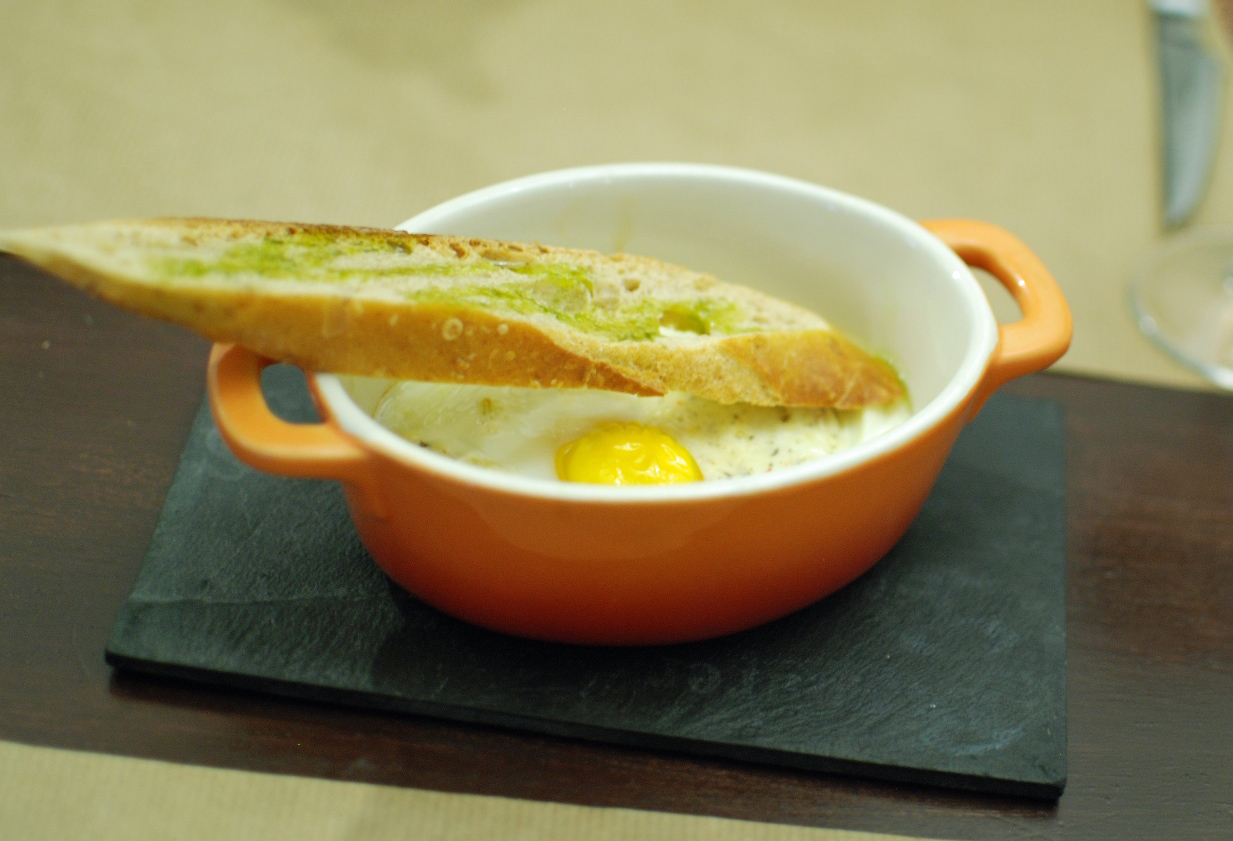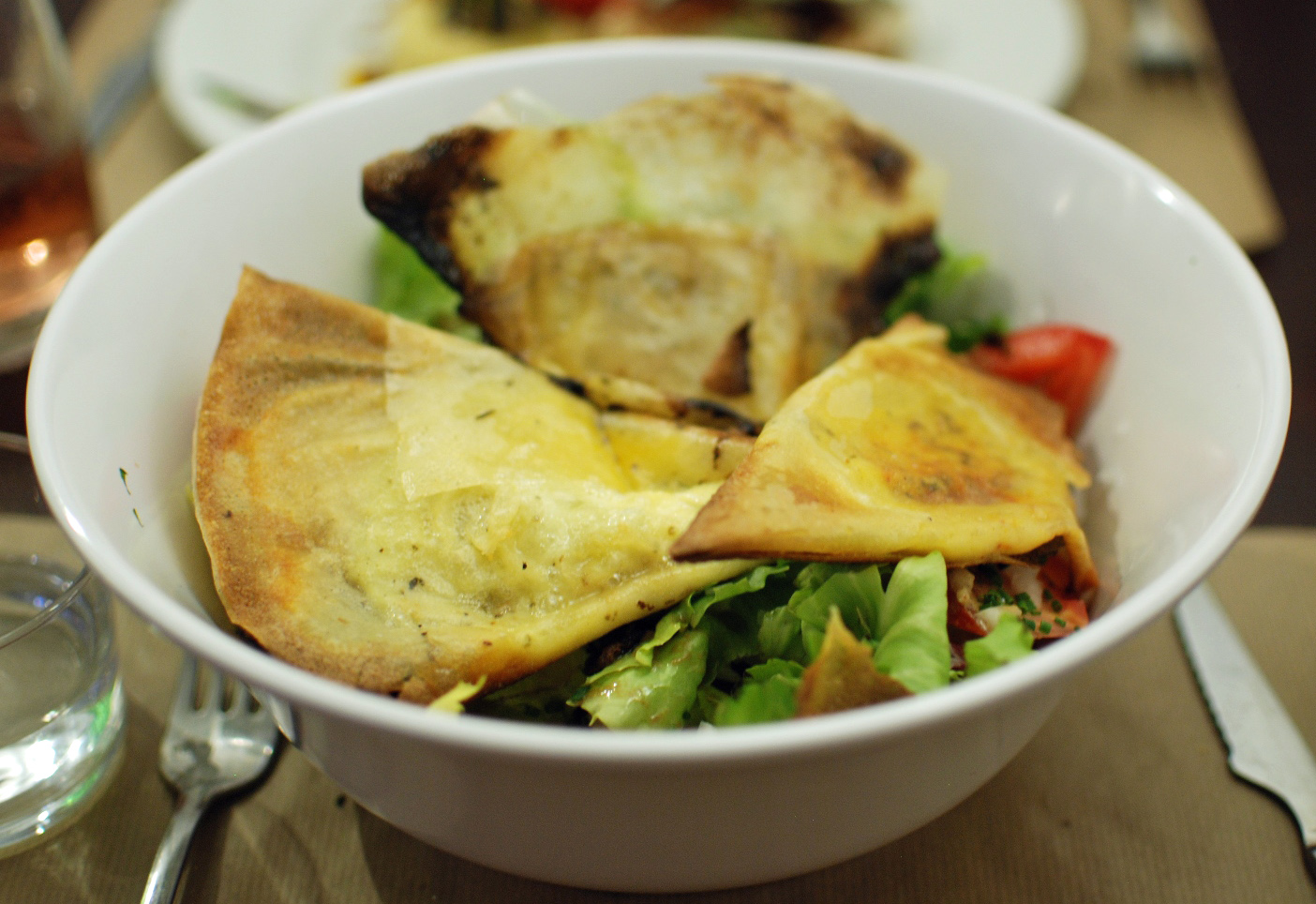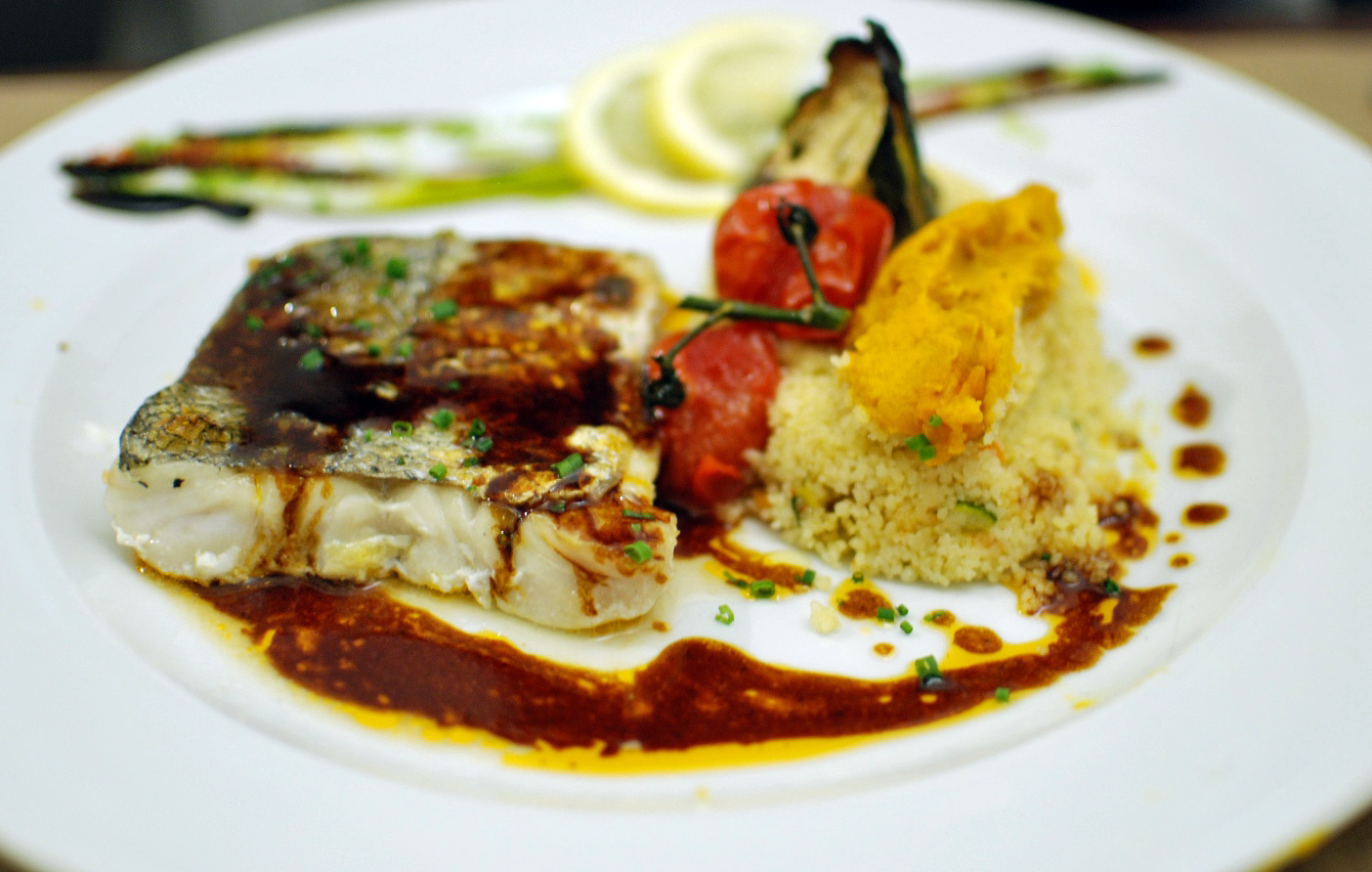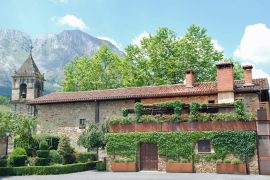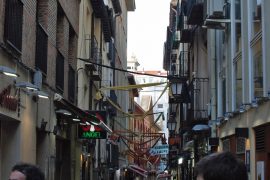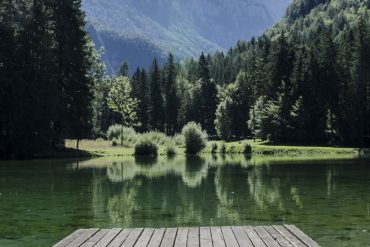Inspired by David’s trip through Northern Spain, we recently returned from an exploration of the Spanish and French Basque Country. Here’s the first post, on French Basque cuisine in Saint-Jean-de-Luz on la Côte Basque, France’s Basque coast. Next, we popped down across the border with Spain to Hondarribia.
Upon arriving at the breathtakingly picturesque Saint-Jean-de-Luz, I immediately knew I would not want to leave. Saint-Jean-de-Luz is on France’s southwest coast, just miles from the Spanish border, but it is actually in the middle of the Basque country, which spans both countries. A small beach and port town of less than 15,000 people, the town sits nestled alongside a stunning mile-long crescent-shaped grande plage with a raised promenade where onlookers meander back and forth speaking French, Basque, or occasionally Spanish (but you’ll rarely hear English).
Off the beach sits the town with charming French Basque architecture of white stone houses with bright red shutters, as well as a gorgeous port with small boats surrounded by hills and dark blue water. Locals and tourists alike sit can be found sitting at any number of outdoor cafes drinking wine or espresso drinks (or both!).
All roads eventually lead to Place Louis XIV, the center of town, which is flanked on all sides by outdoor cafes, serving inexpensive but high quality wine and other treats. Indeed, we were hard pressed to find wines by the glass for more than 2 or 3 euros anywhere we went. Cheaper than water, as it should be.
Of course, all this drinking made us hungry, so we headed over to Chez Maya Petite Grill Basque, known about town for serving traditional French Basque cuisine. As, we quickly learned, everyone in town eats at the same time. All the restaurants are empty at 7:30 pm, packed at 8:30, and empty again at 10:30. Fortunately, we got there at the right time.
Petite Grill Basque is, as the name suggests, a cozy place, with close together tables and a hardworking staff. A tremendously clever overhead fanning system keeps the dining room cool.
The highlight of the meal, though, was a supremely aromatic seafood stew, which the locals call ttoro. The peppery broth makes ample use of Espelette pepper, my favorite French Basque country spice, that always works well with seafood. (See our recipe: here). The stew is presented in a large clay pot, with a first portion ladled into a shallow bowl filled with poached hake, large head-on shrimp, and mussels. An additional amount is retained for seconds, a welcome custom almost unheard of in the United States. The fish were perfectly cooked and tender, with the broth providing a spicy and peppery kick. Of course, thick slices of French baguettes were helpfully served alongside for dipping.The cuisine on la Côte Basque makes full use of its close proximity to the ocean – and to the Spanish expertise in cured meats. Naturally, an appetizer of hand sliced jambon from across the border with Spain provided the perfect start to our meal. The meat takes on a rich, nutty flavor, derived from the pig’s acorn diet, and is unsurpassed – and, fortunately there, reasonably priced.
We ran out of French baguette slices way too quickly. Another dipping-friendly dish consisted of piquillo peppers stuffed with salt cod in a bubbling hot thick tomato broth. Piquillos are similar in flavor to the sweet red peppers you might find on a good Italian deli sandwich. Back home, we’ve been stuffing piquillos with goat cheese and serving them to hungry guests. Here, they provided great compliment of flavors to the salty cod and tangy tomato broth.
Being in France, we had to save room for dessert. When we saw heaping souffles arriving at all the locals’ tables, we were sorely disappointed that this dessert required advanced order! Fortunately, the gâteau basque, did not. The traditional cake of the French Basque region, this almond custard filled crumbly cake provided a nice consolation.
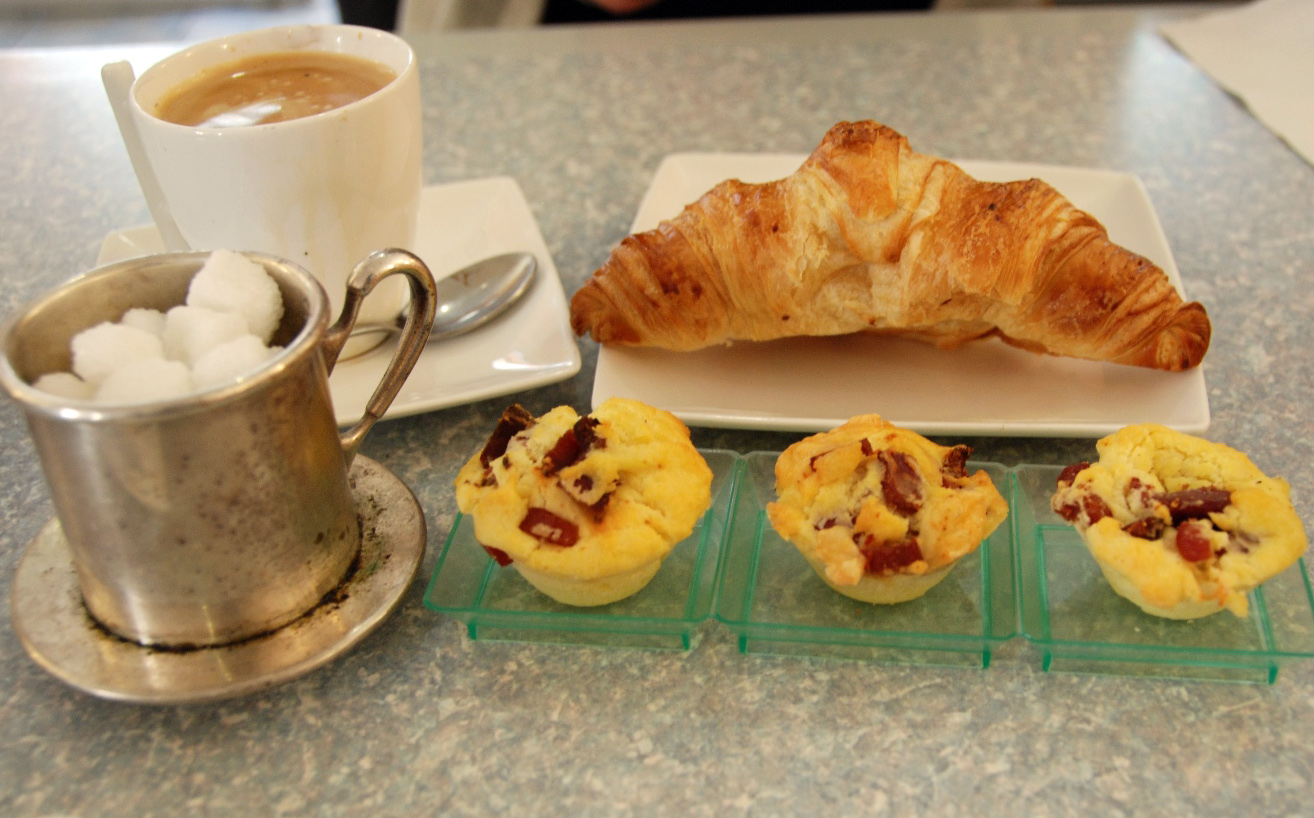
The next morning, we rolled out of bed in search of a French bakery for breakfast, before a long, arduous day relaxing at the beach. Equally arduous was the less than 5 steps we had to take out of our hotel before we came across L’Acanthe Salon de The, a bakery overflowing with homemade croissants and, even better, decadent bacon-studded cheese muffins. The friendly family-run spot also offered countless varieties of teas and coffees.
Then, off to the beach!
After several hours at la plage, we again became un peu faim and spotted a familiar sounding place, La Ruelle, which David sampled on his trip. This affordable seafood restaurant turns out superb simple local catches, best grilled and doused in a piquent garlic-oil. A menu of three large courses for just €20 (with wine, of course) left us satiated and ready for a long afternoon back at the beach.
The best of the dishes were grilled sardines, arranged whole on the plate and doused with ample garlic. They were best to eat whole, as the grilling softened the bones to just a little crunch. They were not fishy, unlike most sardines you’ll find in the U.S. Just crunchy and garlicky. Grilled hake prepared similarly, was also great, but with a less-fun crunch.
For dessert, another gâteau basque was crumbly, almondy, and delicious. But what stole the show was actually the crème brûlée, with a strong vanilla flavor and perfectly crusted top. Brûlées are notoriously under vanilla-ed in this country, and a well-set but lacking in vanilla custard is a routine disappointment for me. Not here.
Feeling up for a splurge one night, we headed over to Le Kaiku, Saint-Jean-de-Luz’s most elegant restaurant. Situated in a subterranean yet elegant dining room with soft lighting and exposed stonework, Le Kaiku turns out sophisticated gastronomy – quite a surprise for a small beach town, until you remember that you’re among Basques and their intense love of great food.
The service is friendly and multilingual, evidently catering to an international audience. Several delightful creations immediately appeared as amuse-bouches, including a hard to imagine yet delicious foie gras crème brûlée and a deconstructed gazpacho. The chef went perhaps a bit overboard on his use of foam in two appetizers, as a txangurro, pea, and citrus was more foam than flavor, and a shrimp ravioli’s use of foam disguised only its heavy handed use of butter.
The chef redeemed himself, however, with the entrees, which included a grilled loin of pork with a play on teriyaki sauce that was perfectly cooked and attractively presented. Line-caught hake with braised fennel and root vegetables appeared to use no molecular gastonomic technique at all, just perfectly cooked, with crispy skin and flaky flesh, with a traditional sauce Américaine, the classic fragrant French seafood sauce.
On another night, we stumbled upon Bodega Koko, which served a more casual but still sophisticated take on French Basque cuisine. “Bodega” does not mean the corner market we New Yorkers know all too well. Rather, it is used here to mean a “cellar” like a wine cellar, as we happily saw during our subsequent trip to the Rioja wine country in Spain. Naturally, Bodega Koko had a healthy collection of wines from all over the Basque region.
Our meal started with an unusual but delicious amuse: creamy goat cheese surrounded by thinly sliced cured ham and toasted sesame seeds, and then topped with a slick of honey. Make these at your next party and they will be the first to disappear. Continuing with the goat cheese theme, Koko satisfied my weakness for warm goat cheese salads; here, with a twist, the cheese was wrapped in flaky and supremely crunchy pastry.
We also enjoyed an inventive parmesan and truffle coquette topped with an egg and a crispy olive-oil drizzed toast.
Everyone else in the restaurant appeared to be ordering a special hake with a balsamic demiglaze and accompanied by couscous. Bowing to peer pressure, we went for it too, and we were not disappointed. Our meal ended with a caramel-chocolate custard served in a glass on top of a slate board. And several more glasses of wine.
The next day’s weather called for clouds and cold weather, a perfect excuse to skip the beach for a day and explore Hondarribia just across the border into Spain.
Petite Grill Basque: 2 Rue Saint-Jacques, Tel: 05 59 26 80 76
L’Acanthe Salon de The: 31 Rue Joseph Garat, lacanthe.com, Tel: 05 59 26 85 59
La Ruelle: 19 Rue de la République,Tel: 05 59 26 37 80
Le Kaiku: 17 Rue de la République, kaiku.fr, Tel: 05 59 26 13 20
Bodega Koko: 19 Rue Louis-Fortuné Loquin, bodegakoko.wordpress.com, Tel: 06 48 36 19 01
